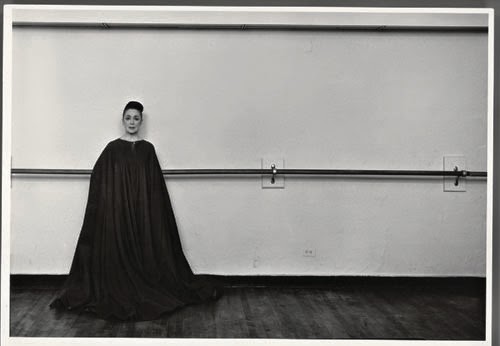The Man Behind the Camera—Arnold Newman: Masterclass
 |
|
Arnold
Newman, Georgia O’Keeffe, painter, Ghost
Ranch, New Mexico, 1968. Gelatin silver print © 1968, 22 5/8 x 28 1/8 in. Arnold Newman/Getty Images. |
Considered one of the twentieth century’s major portrait
photographers, Arnold Newman (1918–2006) took photographs that captured the artists,
writers, celebrities, politicians, and businessmen that shaped the world during
his long career. Well known for his perfectionism, he would meticulously craft
his photographs both at the sitting and in the darkroom. However, this rigorous
process often meant that in publications and exhibitions of his work, it was
nearly impossible for a curator or editor to prevail against Newman’s strong
opinions. Because he wanted to show work he felt was most impressive, figures who
were no longer well known such as businessmen, as well as landscapes,
cityscapes, and abstractions were often omitted from documentation of his work.
Arnold Newman:
Masterclass, the first posthumous retrospective of Newman’s work, reverses
these omissions. Always open about his process, the title references the
importance of teaching in his work as he enjoyed leading workshops and courses.
The exhibition is divided into ten sections loosely based on Newman’s
techniques, to assist in the visitor’s understanding of his artistic evolution
and priorities.
 |
|
Arnold
Newman, Martha Graham, dancer, choreographer and teacher, New York,
1961. Gelatin silver print © 1961, 45 1/2 x 53 1/2 in. Arnold Newman/Getty Images. |
What differentiated Newman from his contemporaries was that he
photographed his subjects in their natural environments: their studios, living
rooms, and offices. Newman’s approach caused him to be labeled as the pioneer
of the “environmental” portrait, but he rebelled against the label insisting
that his work was better understood as “symbolic.” Researching his subjects
beforehand, he would use his knowledge to “build” his photographs from the
clues he found in their spaces. When a sitter was nervous or reserved, Newman
would purposefully bumble around the studio or stall, until they relaxed; a
skill he had learned in department store portrait studios (he was forced to
leave school for financial reasons). He carefully composed each frame, drawing
out his subjects to capture something at the heart of their personality, often
a perspective that remained otherwise hidden.
He commonly set artists’ work within the frame of their
portraits, as in his photographs of Joseph Albers (1948), and Piet Mondrian
(1942) who appear as elements in one of their own compositions, and made their
work central to their depicted identity. Newman’s own identity as an artist and
photographer, however, was removed from his personal beliefs, which rarely
entered into his work. An ardent Zionist, he met his wife Augusta in 1948 while
working to raise money and arrange shipments of arms to the Haganah, the underground army fighting
to establish the state of Israel. He photographed David Ben-Gurion in 1967, as
well as Yasser Arafat in 1993 when the two men supposedly “charmed each other.”
 |
|
Arnold
Newman, Igor Stravinsky, composer and
conductor, New York, 1946. Gelatin silver print © 1946, 17 15/16 x 21 1/16 in. Arnold Newman/Getty Images. |
This separation between his work and his personal politics
brings us back to the fact that Newman considered himself an artist before
everything else. He would often recall the abstractions that were his focus at
the beginning of his career, and to which he continued to return, highlighting the
fact that photography was merely one tool. He hoped to be recognized as a photographer
who happened to take portraits. Bringing together photographs demonstrating the
full scope of his work, Masterclass is
a lesson in artistic diversity and nuance.
Arnold Newman: Masterclass is open through February 1, 2015.




Comments